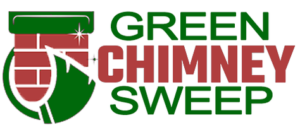As homeowners, maintaining a safe and comfortable living environment is a top priority. While many are diligent about general upkeep, one crucial aspect often overlooked is chimney maintenance. Regular chimney sweeping is not merely an old-fashioned practice; it is a vital component of home safety and efficiency. This article delves into why consistent chimney cleaning is essential, the potential dangers of neglecting this task, and the myriad benefits it offers.
Understanding the Role of a Chimney
A chimney serves as a critical component of any home with a fireplace, wood stove, or furnace. Its primary function is to channel smoke, gases, and other byproducts of combustion out of the house, ensuring that the air inside remains breathable and free from harmful pollutants. Over time, however, these byproducts can accumulate inside the chimney, leading to significant safety hazards if not regularly cleaned.
The Dangers of a Dirty Chimney
- Creosote Buildup: One of the most dangerous byproducts of burning wood is creosote, a sticky, tar-like substance that accumulates inside the chimney flue. Creosote is highly flammable, and even a small buildup can ignite, leading to a chimney fire. Chimney fires can reach extremely high temperatures, causing extensive damage to the chimney structure and potentially spreading to the rest of the house.
- Blockages: Debris such as leaves, twigs, and even animal nests can obstruct the chimney. These blockages prevent smoke and dangerous gases like carbon monoxide from exiting the home. Carbon monoxide is a colorless, odorless gas that can cause severe health issues or even be fatal at high concentrations. A blocked chimney also reduces the efficiency of your fireplace or stove, leading to increased energy costs.
- Deterioration and Structural Damage: Without regular maintenance, chimneys can develop cracks and other structural issues. Water infiltration through these cracks can lead to further damage, compromising the integrity of the chimney. Over time, this can result in costly repairs or even necessitate the complete rebuilding of the chimney.
The Benefits of Regular Chimney Sweeping
- Fire Prevention: The most significant benefit of regular chimney sweeping is the prevention of chimney fires. By removing creosote buildup and other flammable materials, a professional chimney sweep significantly reduces the risk of a fire starting in your chimney.
- Improved Air Quality: Regular chimney cleaning ensures that harmful gases are efficiently vented out of your home. This is particularly important for indoor air quality, as it reduces the risk of carbon monoxide poisoning and respiratory issues caused by smoke inhalation.
- Enhanced Efficiency: A clean chimney allows your fireplace or stove to operate more efficiently. This means more heat from the same amount of fuel, resulting in lower heating costs and a cozier home during the colder months.
- Extended Chimney Life: Routine maintenance helps identify and address minor issues before they become major problems. This proactive approach can extend the life of your chimney, saving you money in the long run by avoiding expensive repairs or replacements.
- Peace of Mind: Knowing that your chimney is clean and in good working order provides peace of mind. You can enjoy the warmth and ambiance of your fireplace without worrying about potential hazards lurking in your chimney.
The Chimney Sweeping Process
Professional chimney sweeping involves several steps to ensure thorough cleaning and inspection:
- Initial Inspection: The process begins with an initial inspection to assess the condition of the chimney and identify any visible issues such as blockages or damage.
- Preparation: The area around the fireplace or stove is covered to protect your home from dust and debris. The chimney sweep may also set up specialized equipment to collect debris and soot during the cleaning process.
- Sweeping: Using specialized brushes and rods, the chimney sweep scrubs the interior of the chimney to remove creosote buildup and other debris. This process may be done from the top of the chimney or the bottom, depending on the specific setup of your chimney.
- Final Inspection and Report: After cleaning, a final inspection is conducted to ensure that the chimney is free from blockages and any issues have been addressed. The chimney sweep will provide a detailed report outlining the work done and any further recommendations for maintenance or repairs.
How Often Should You Sweep Your Chimney?
The frequency of chimney sweeping depends on several factors, including the type of fuel you use and how often you use your fireplace or stove. As a general rule, the National Fire Protection Association (NFPA) recommends having your chimney inspected and cleaned at least once a year. However, if you use your fireplace or stove frequently, you may need more frequent cleanings. It’s always best to consult with a professional chimney sweep to determine the optimal maintenance schedule for your specific situation.
Conclusion
Regular chimney sweeping is an essential practice for maintaining home safety and efficiency. By preventing chimney fires, improving air quality, enhancing efficiency, extending chimney life, and providing peace of mind, this simple maintenance task offers significant benefits. Don’t wait until a problem arises; schedule your chimney cleaning today to ensure your home remains a safe and comfortable haven.
For professional and reliable chimney sweeping services, trust Green Chimney Sweep to keep your chimney in top condition.
